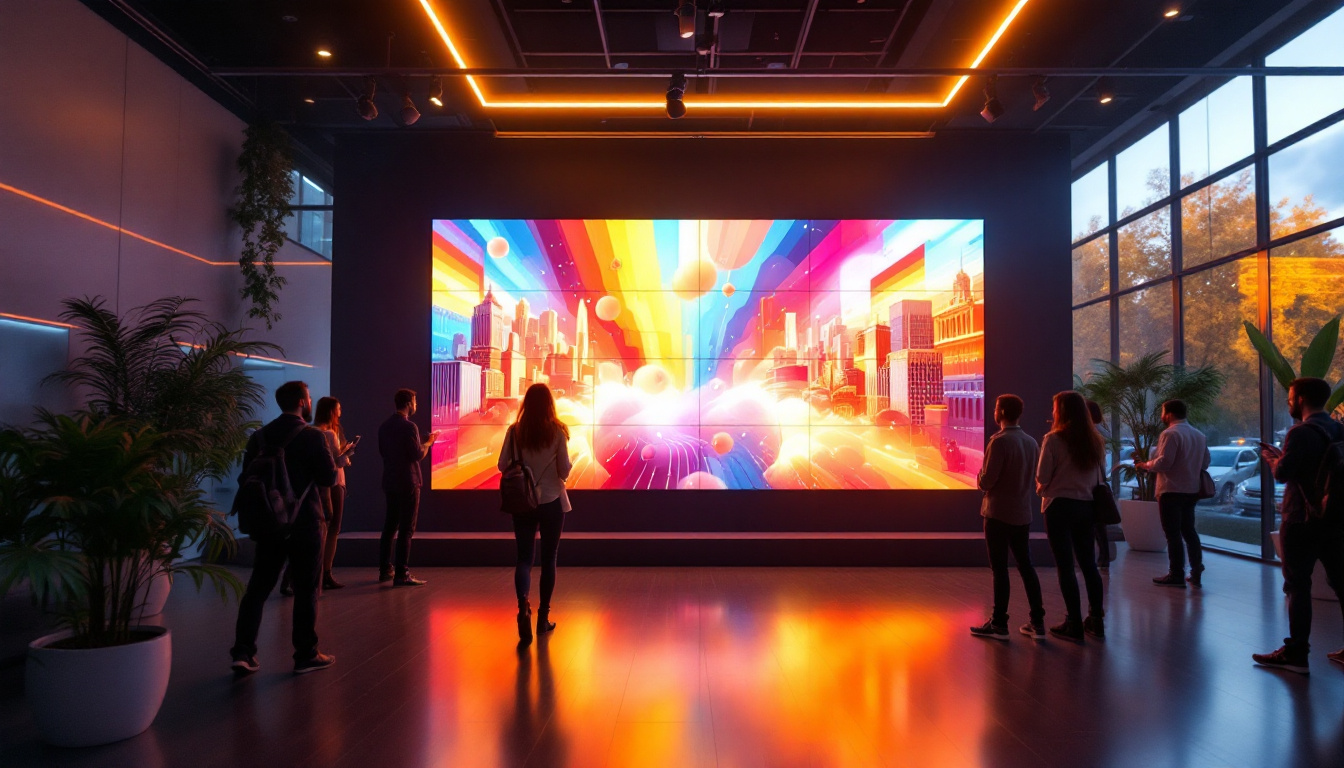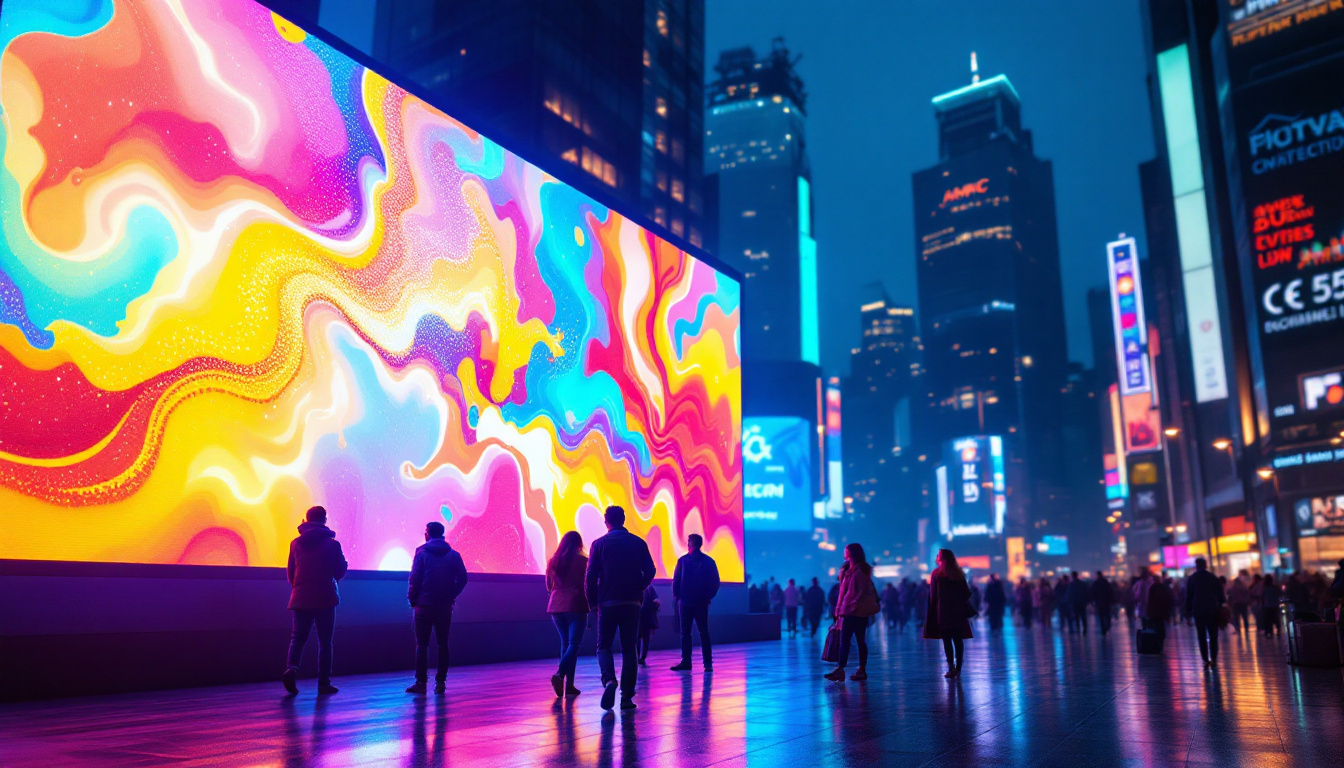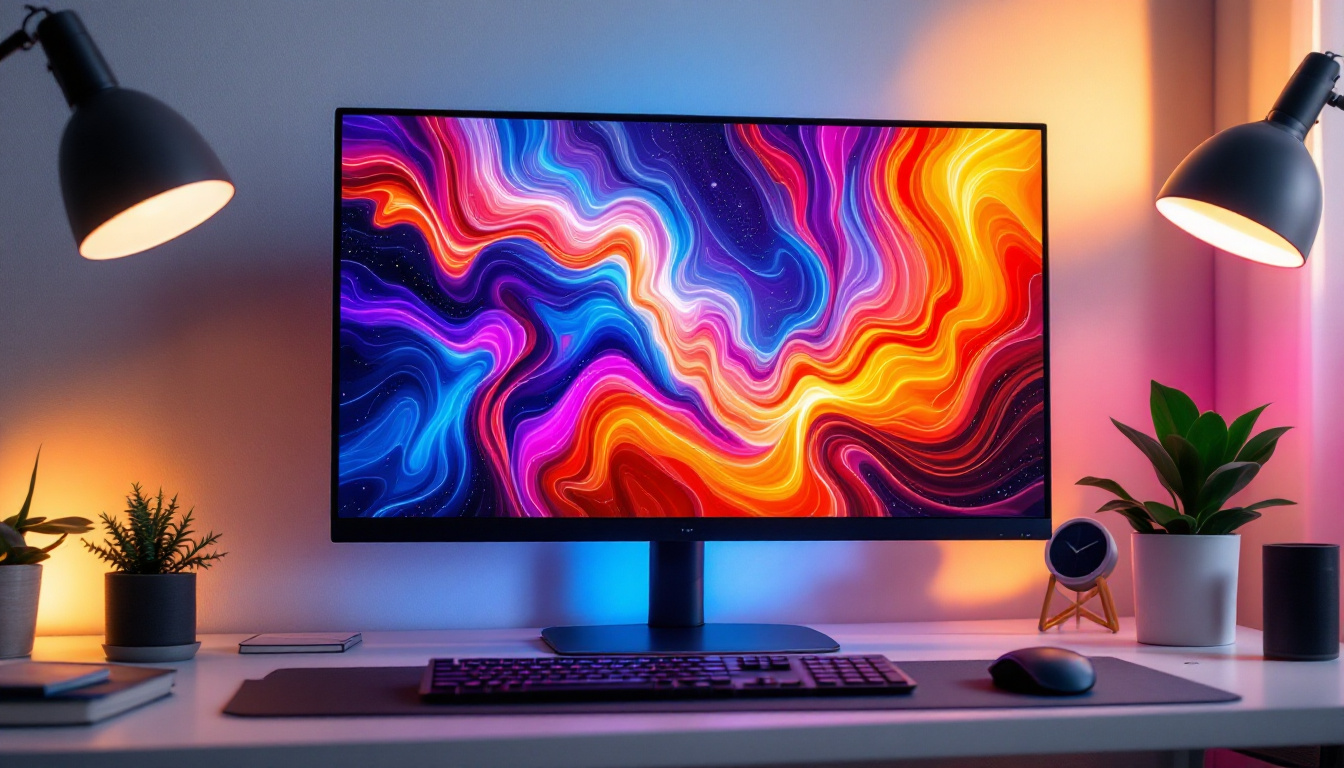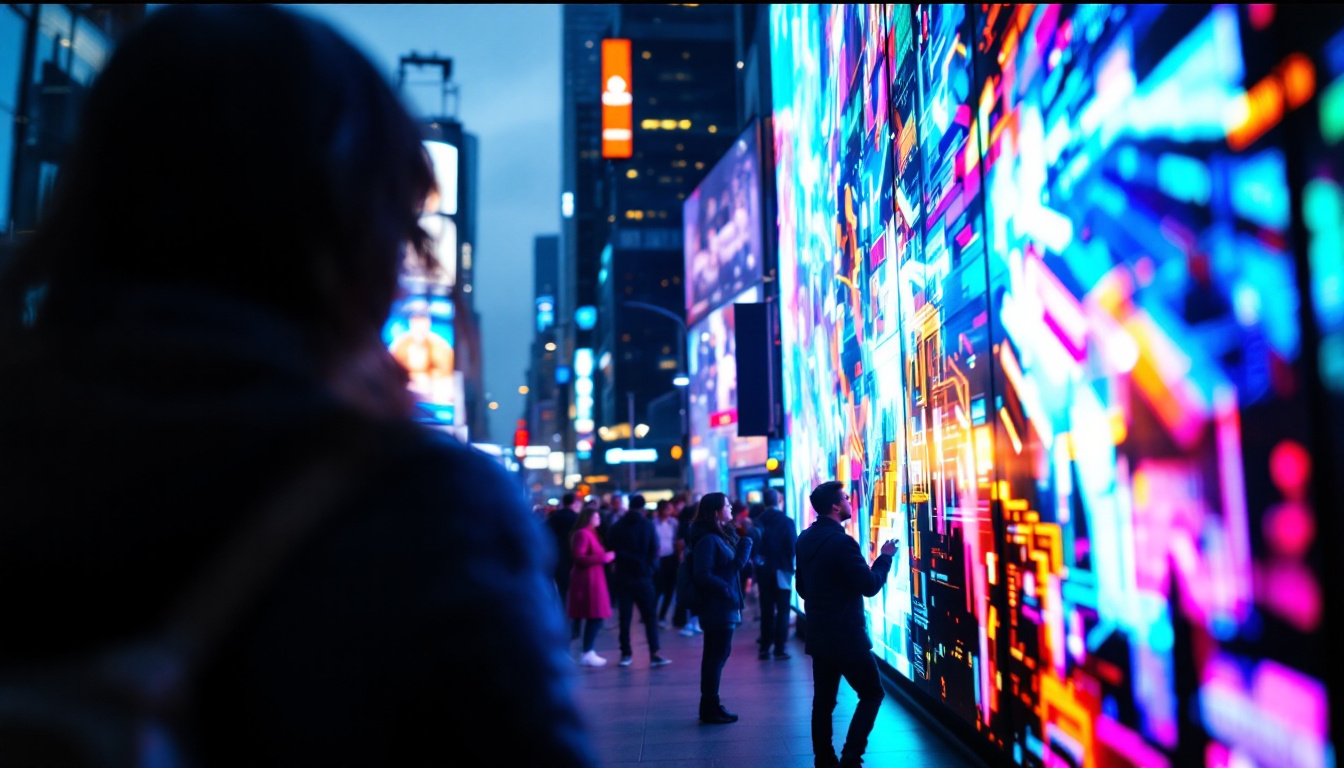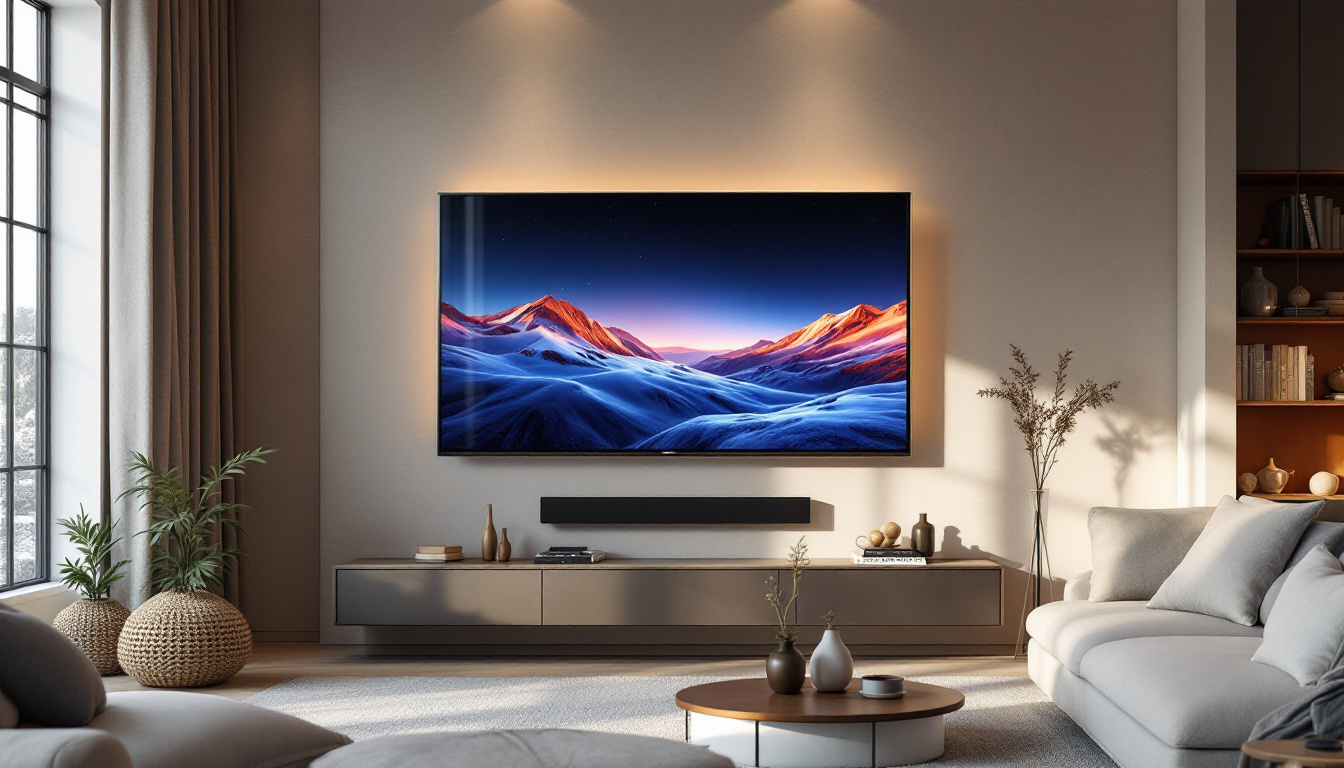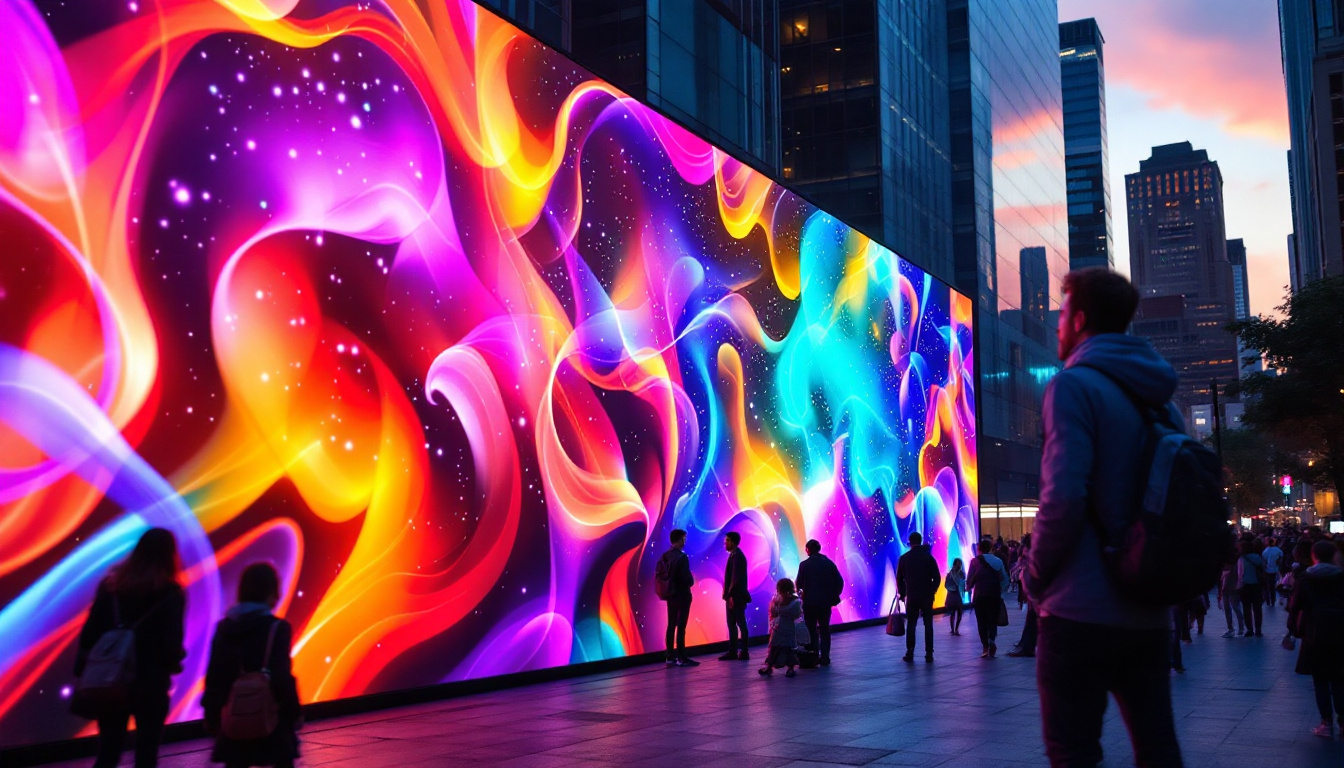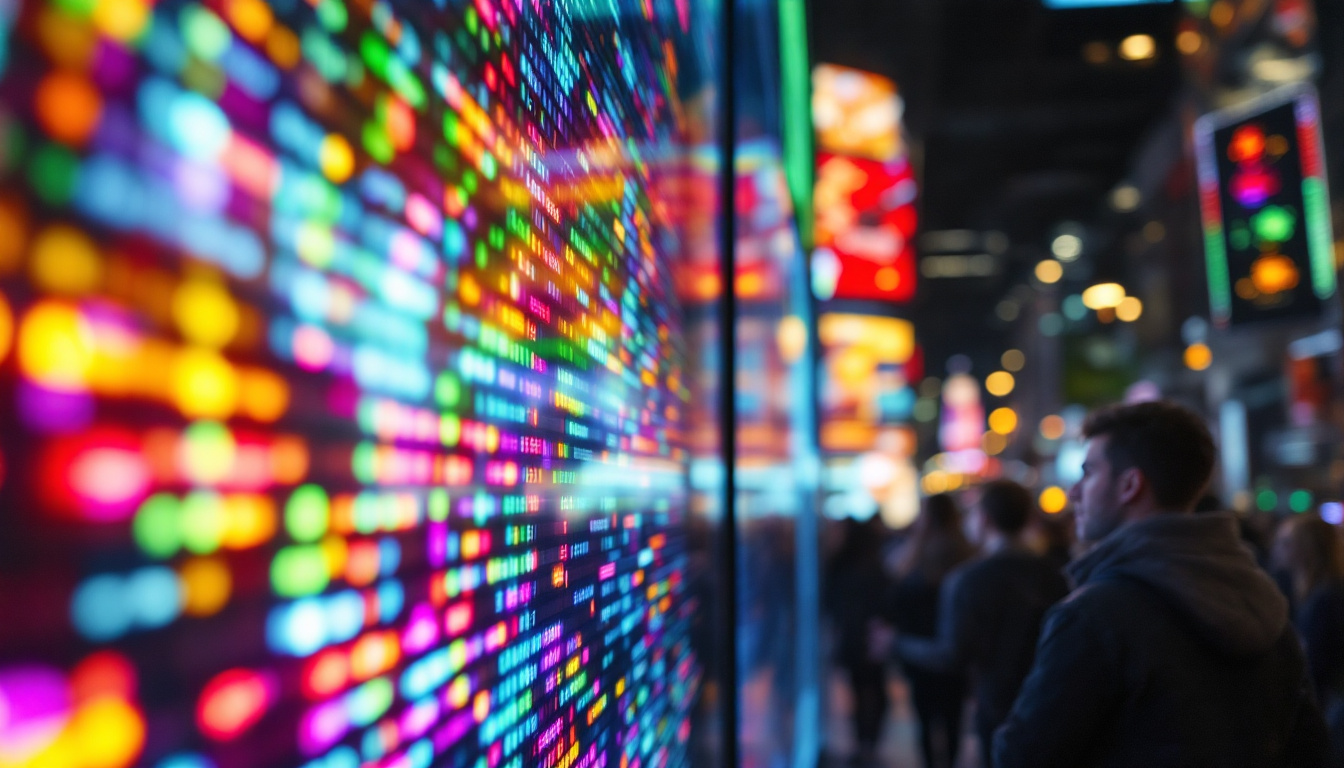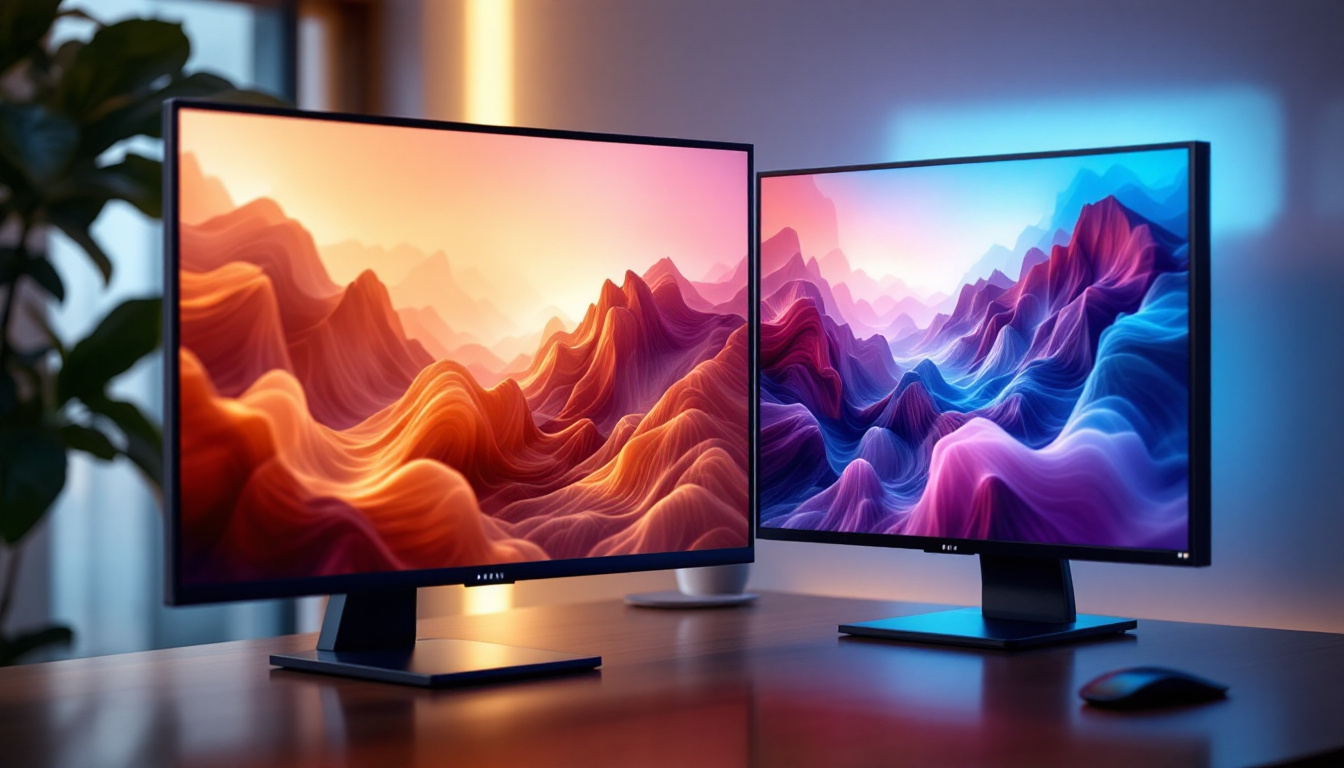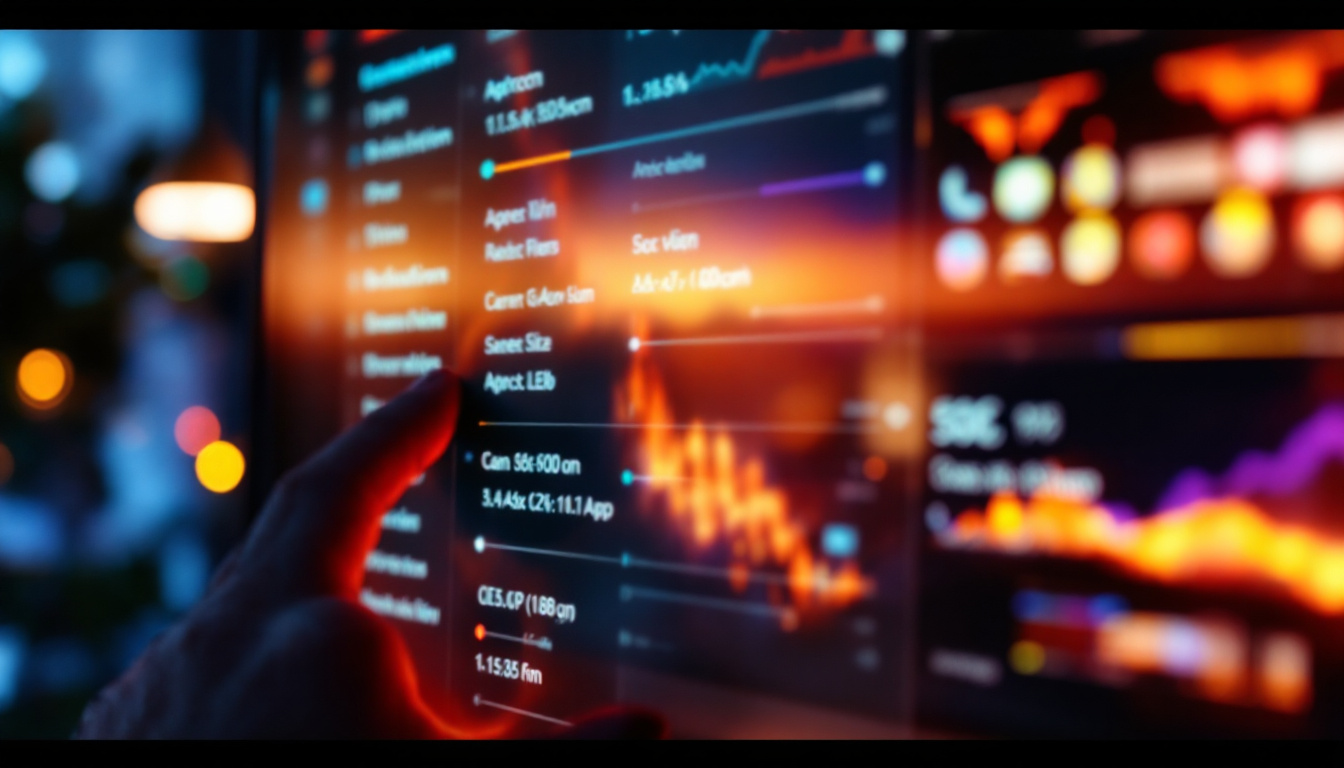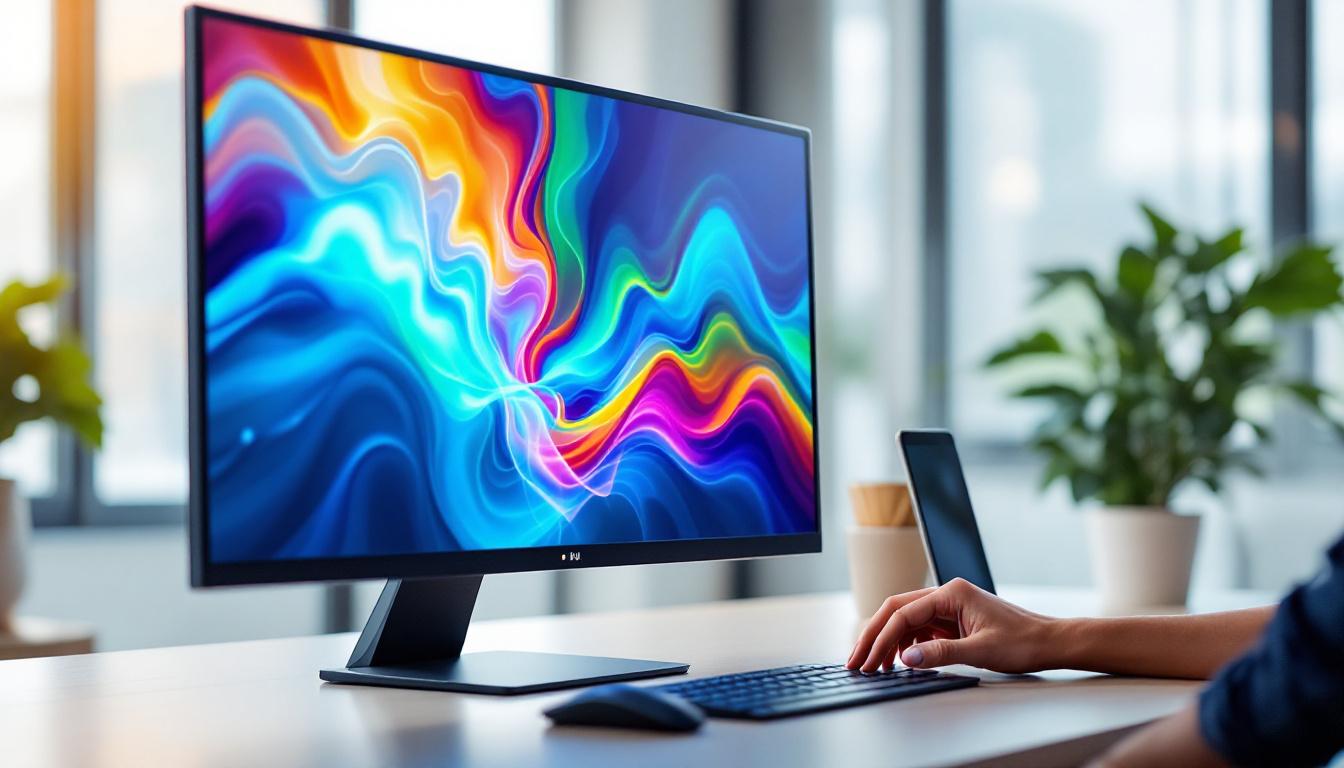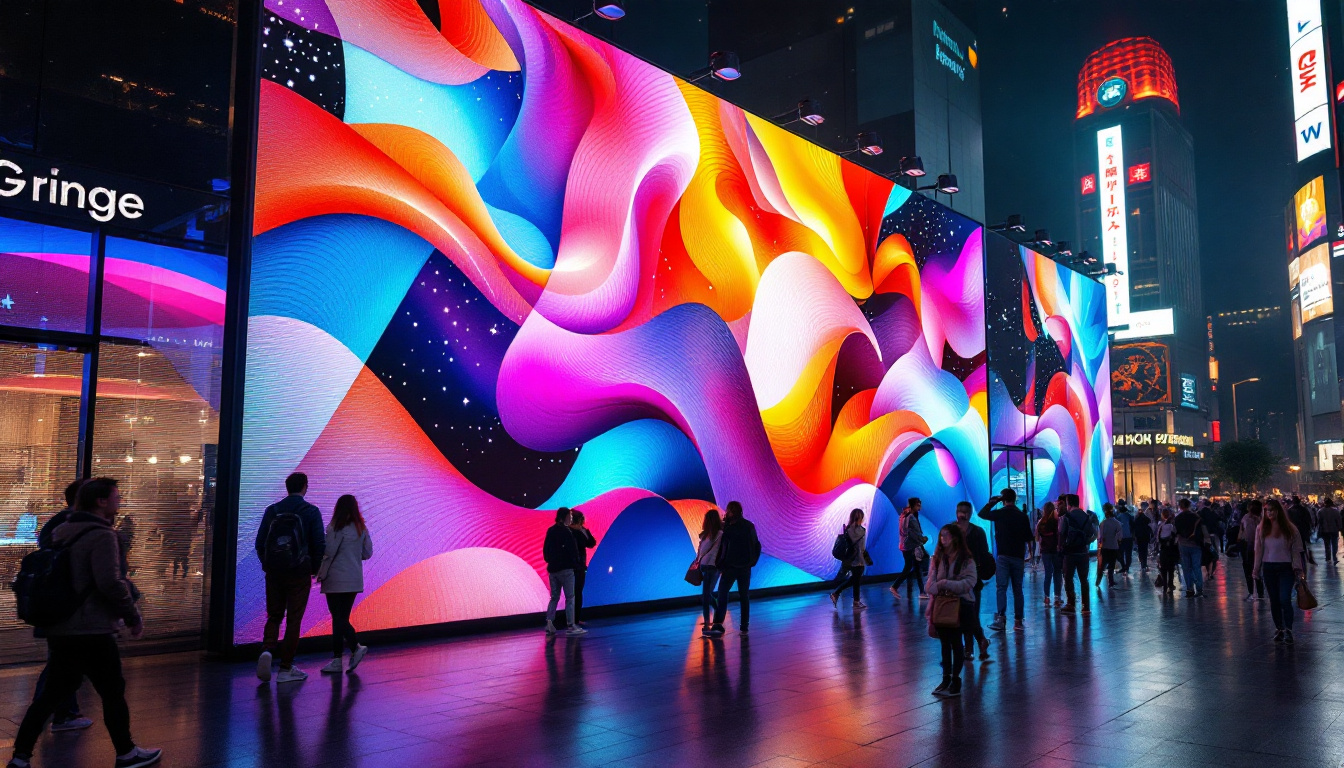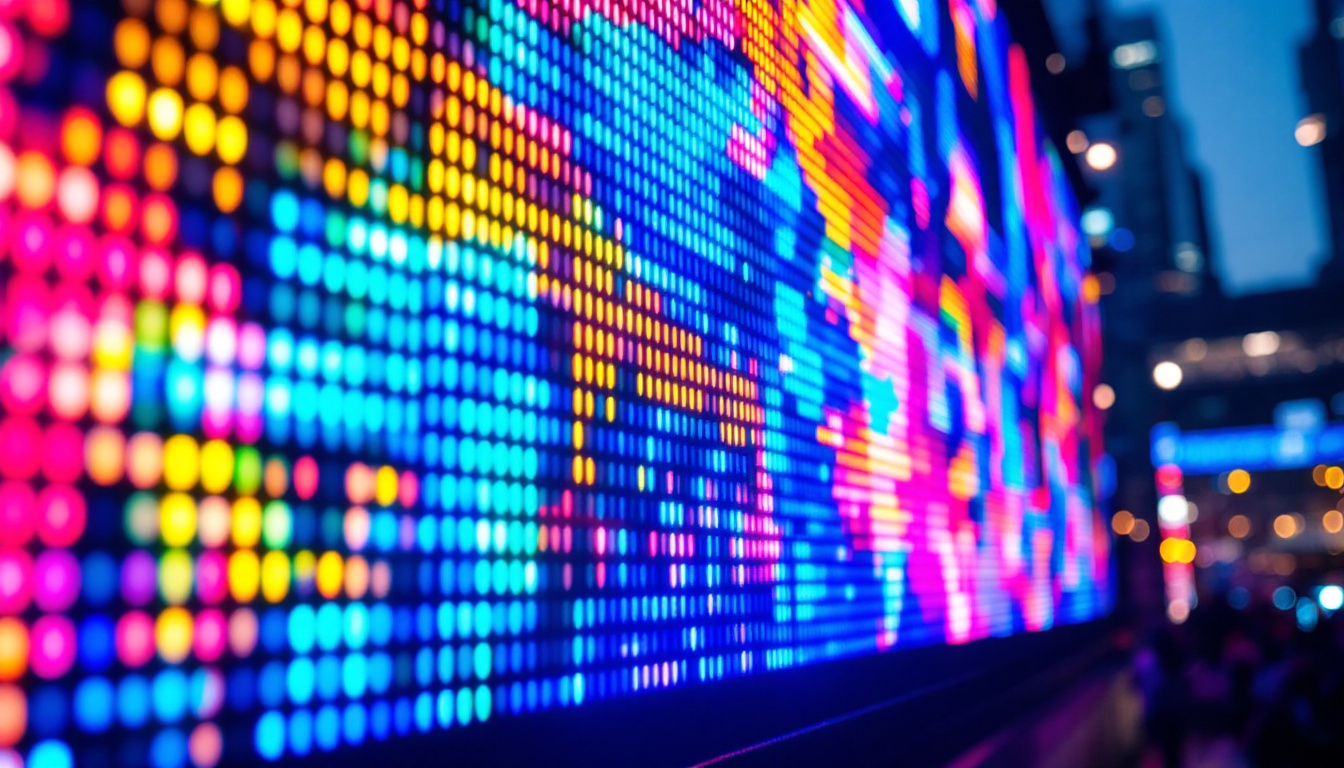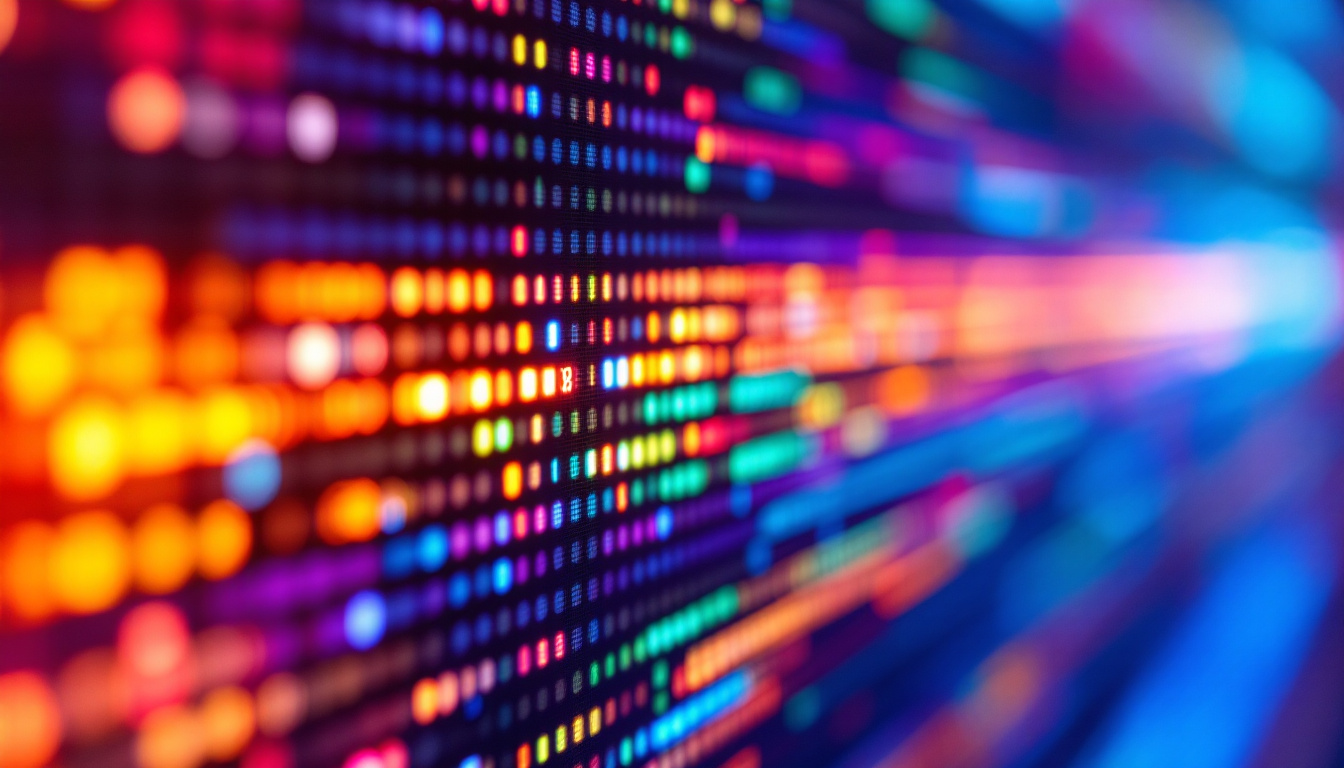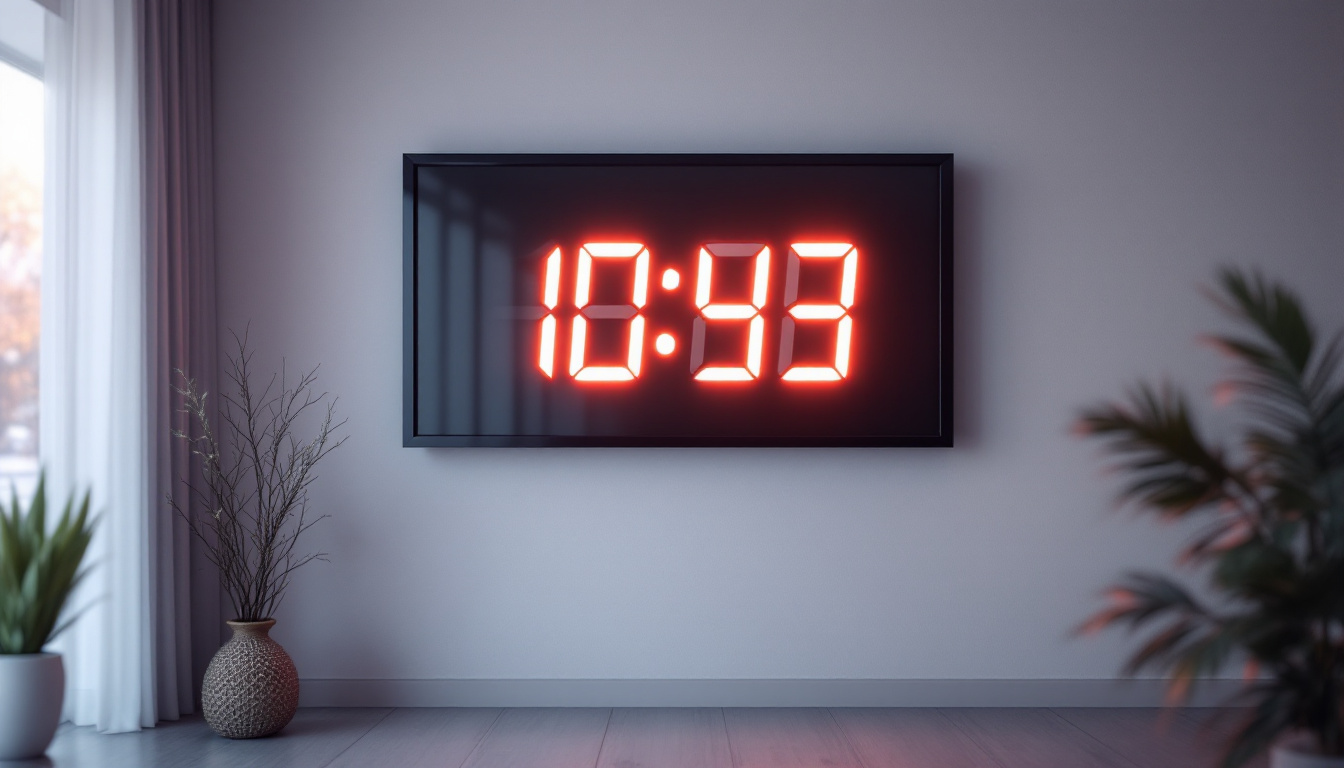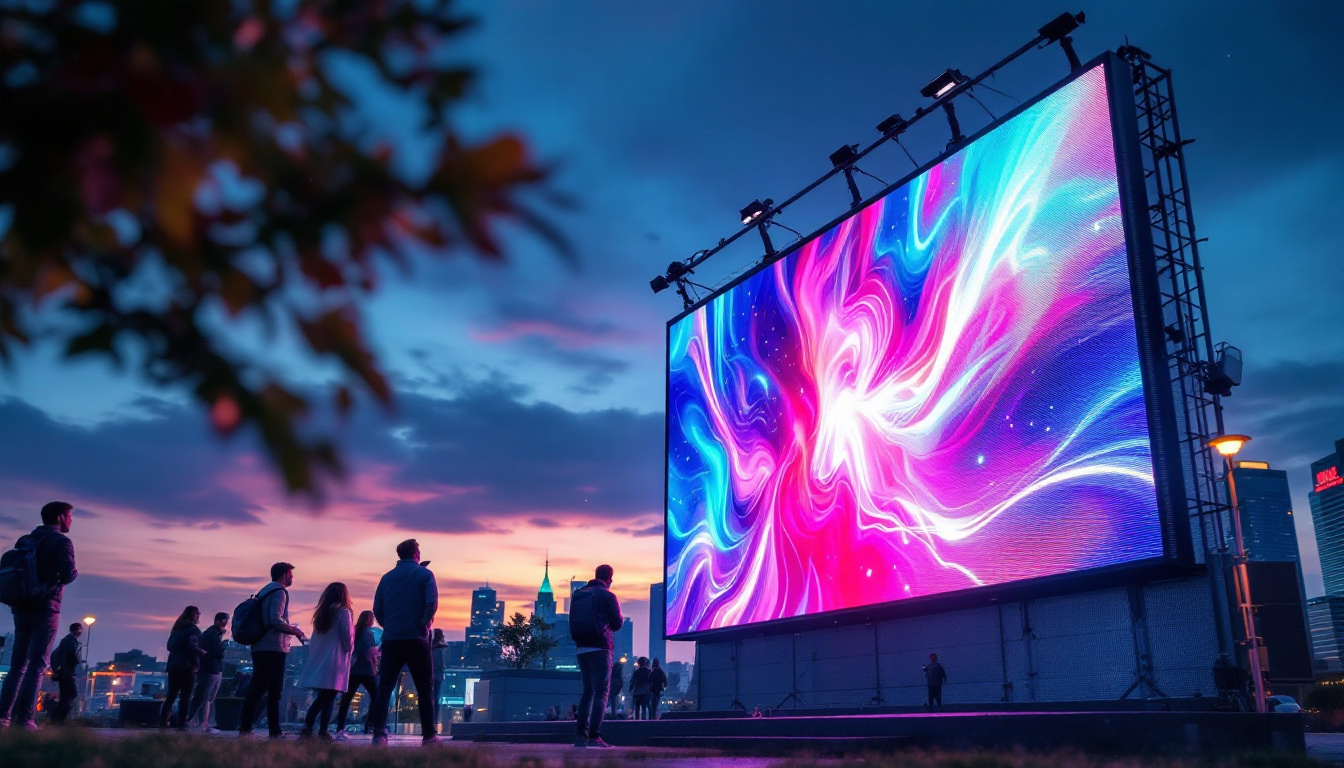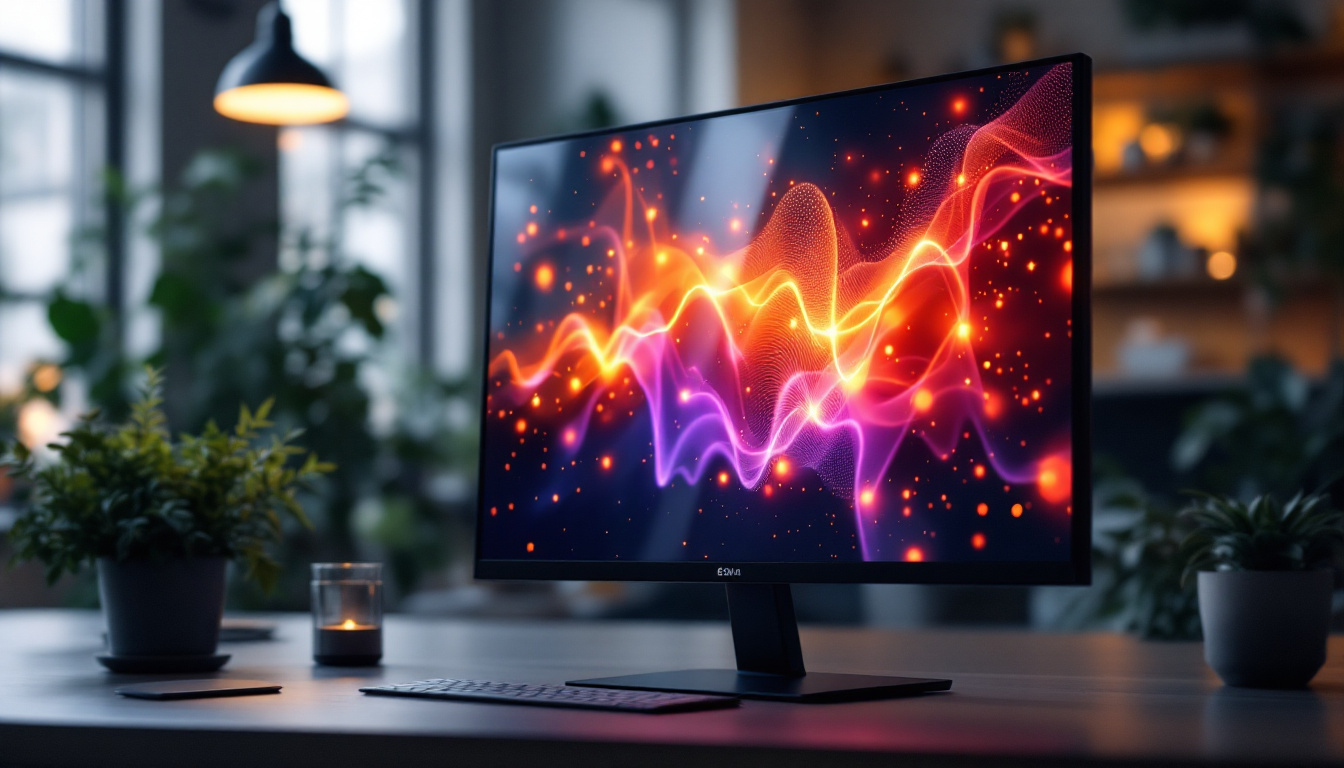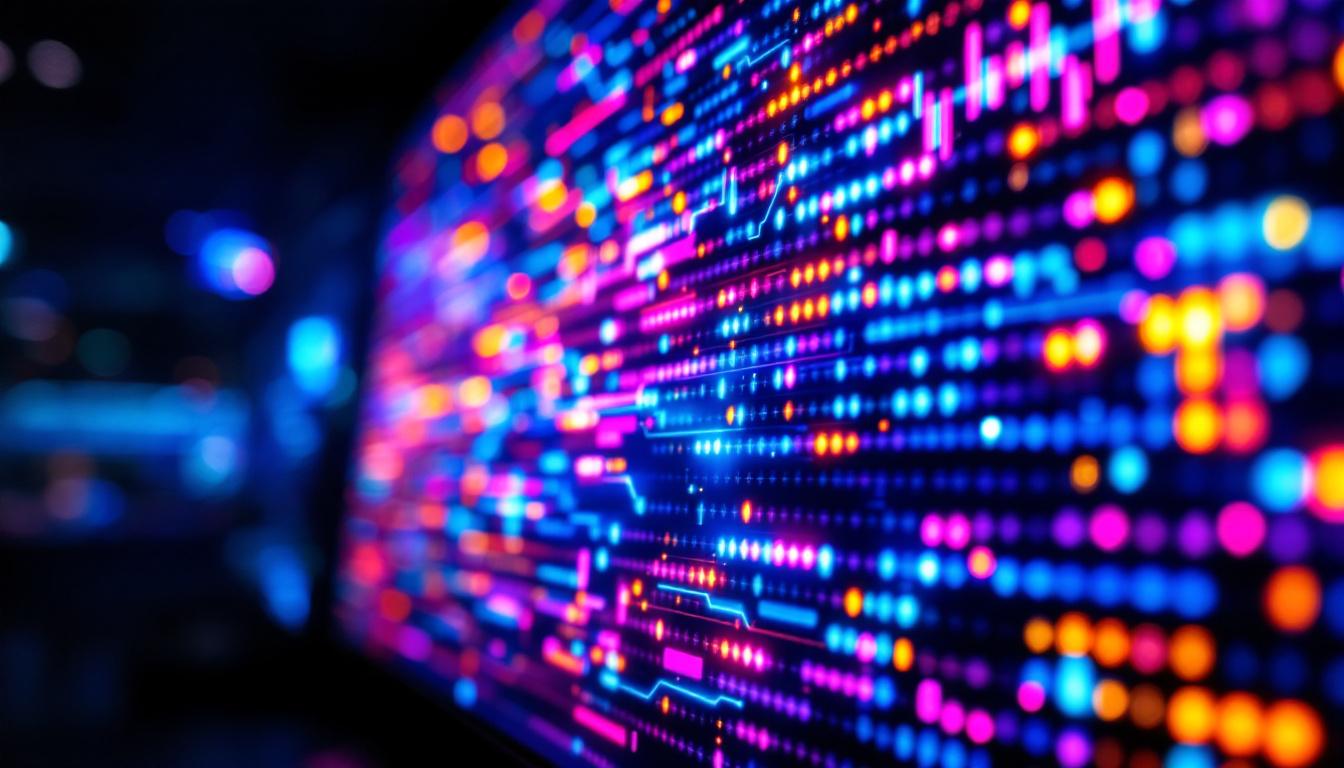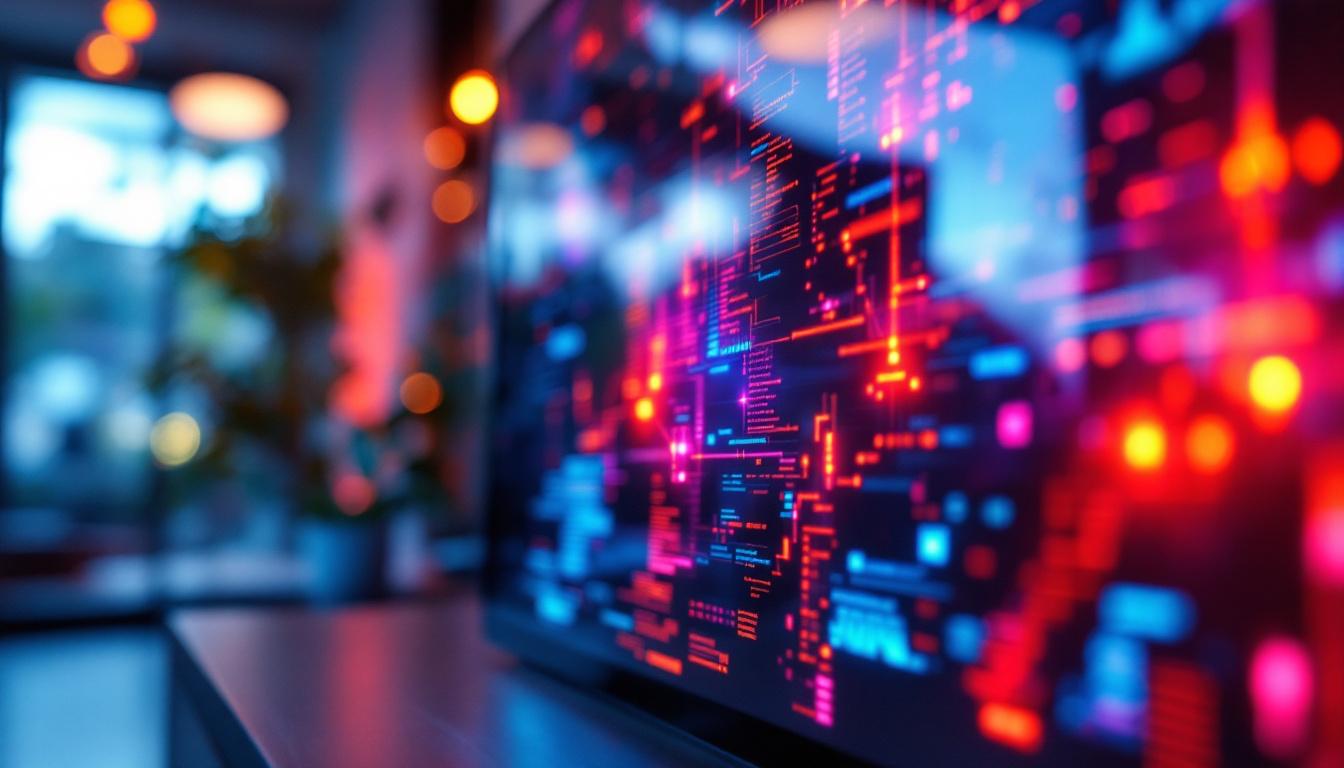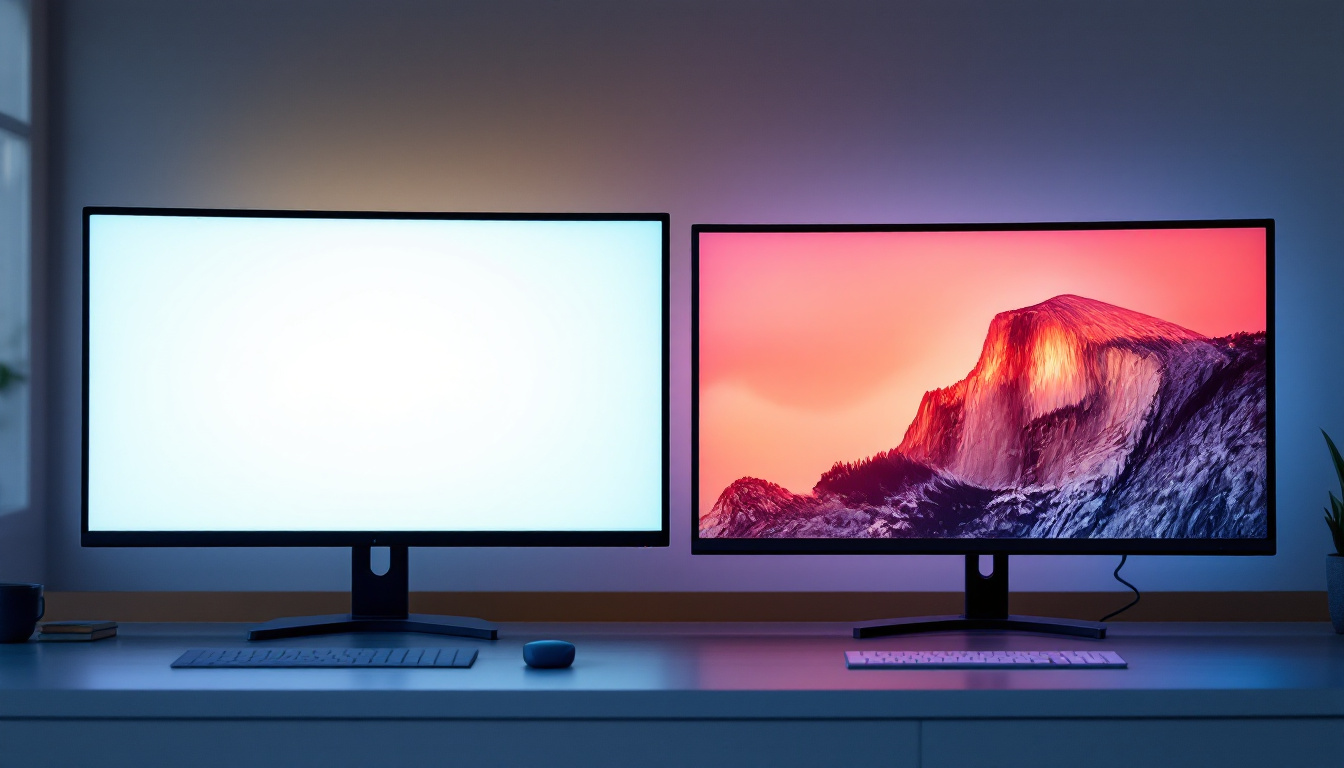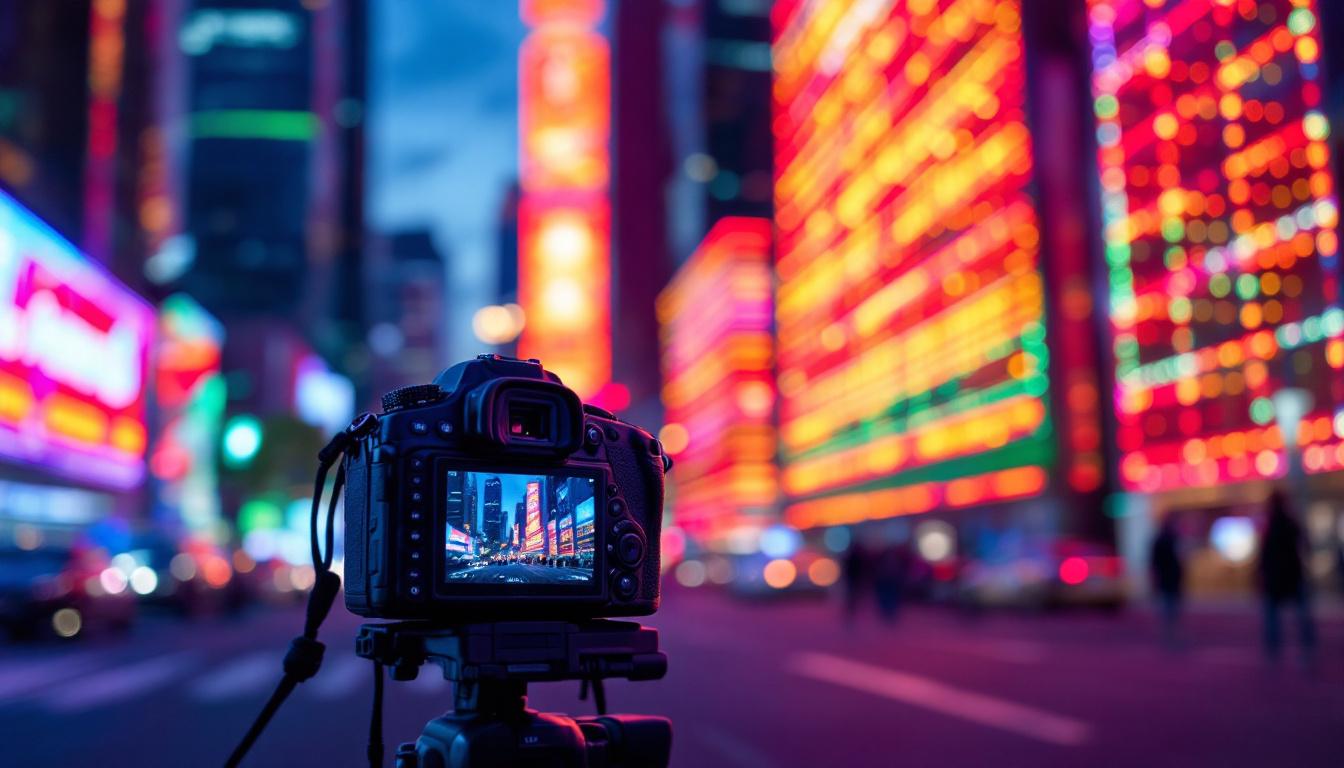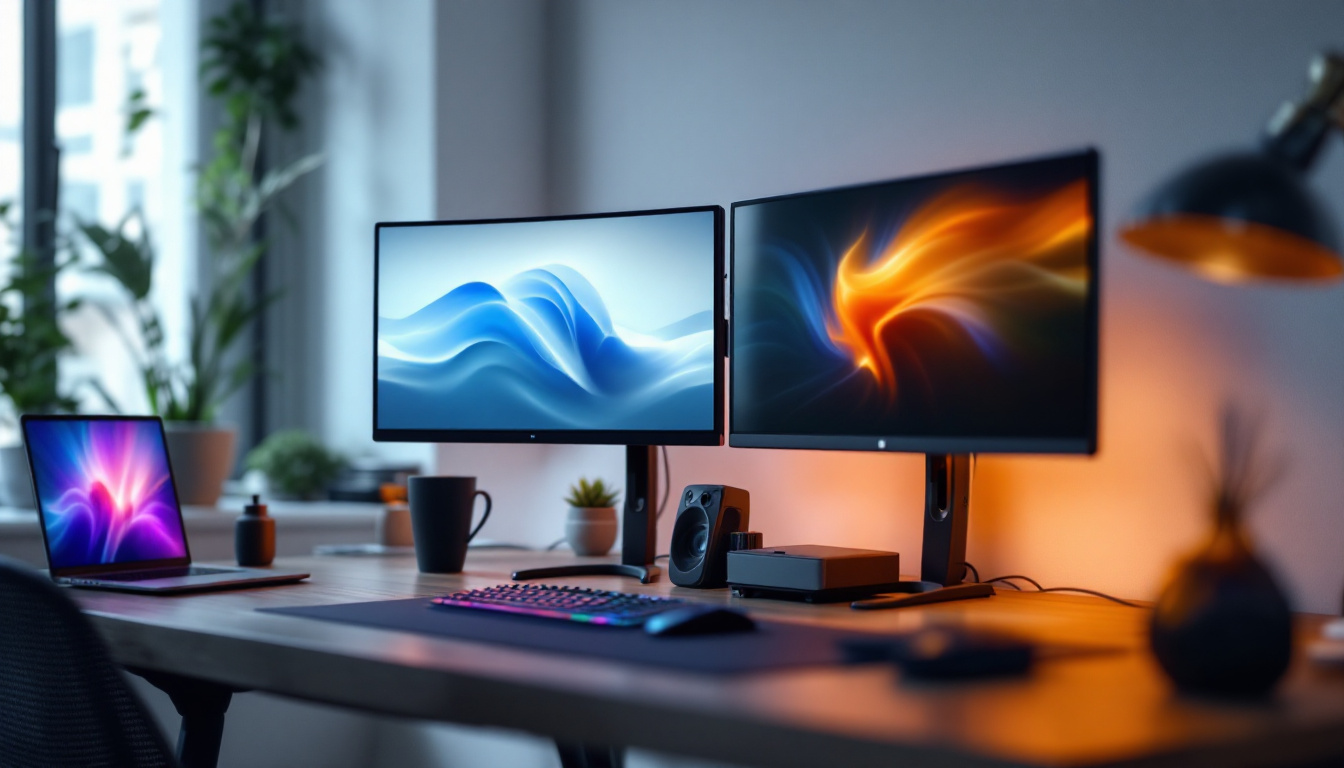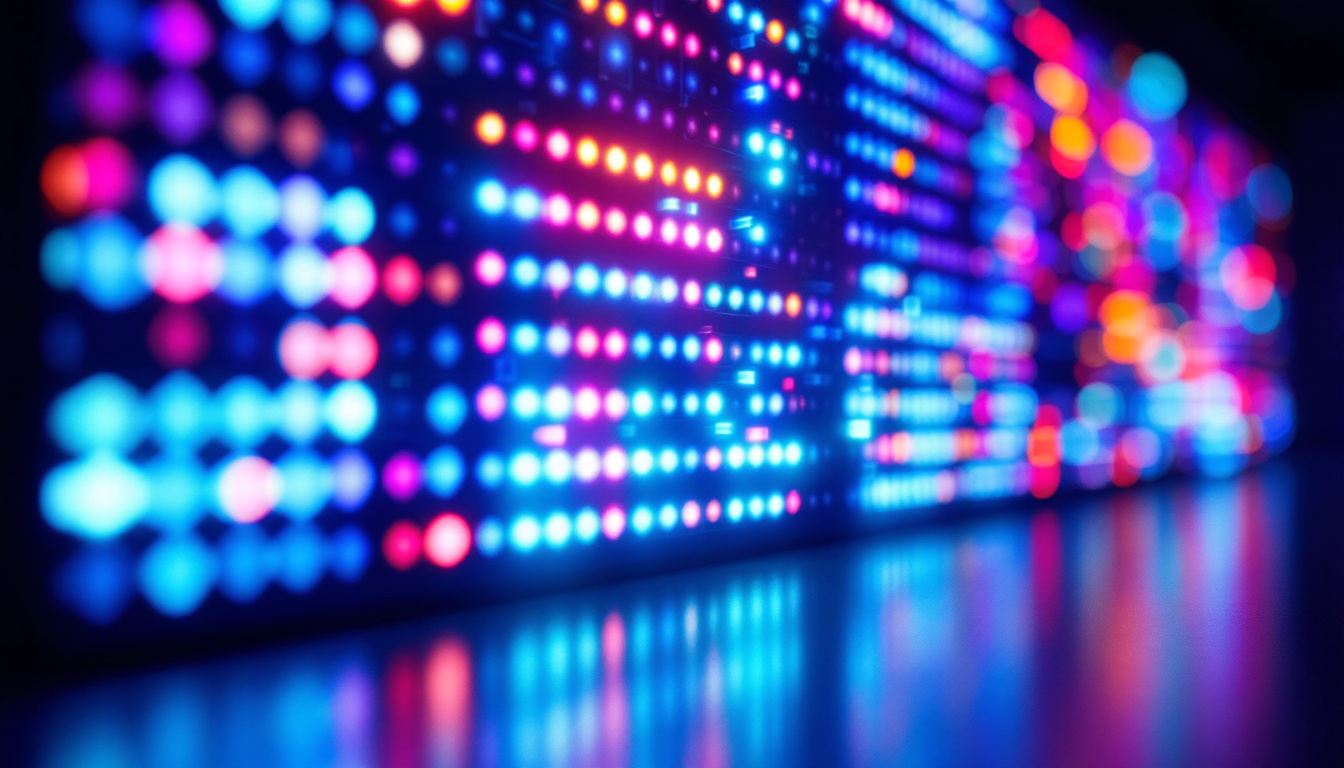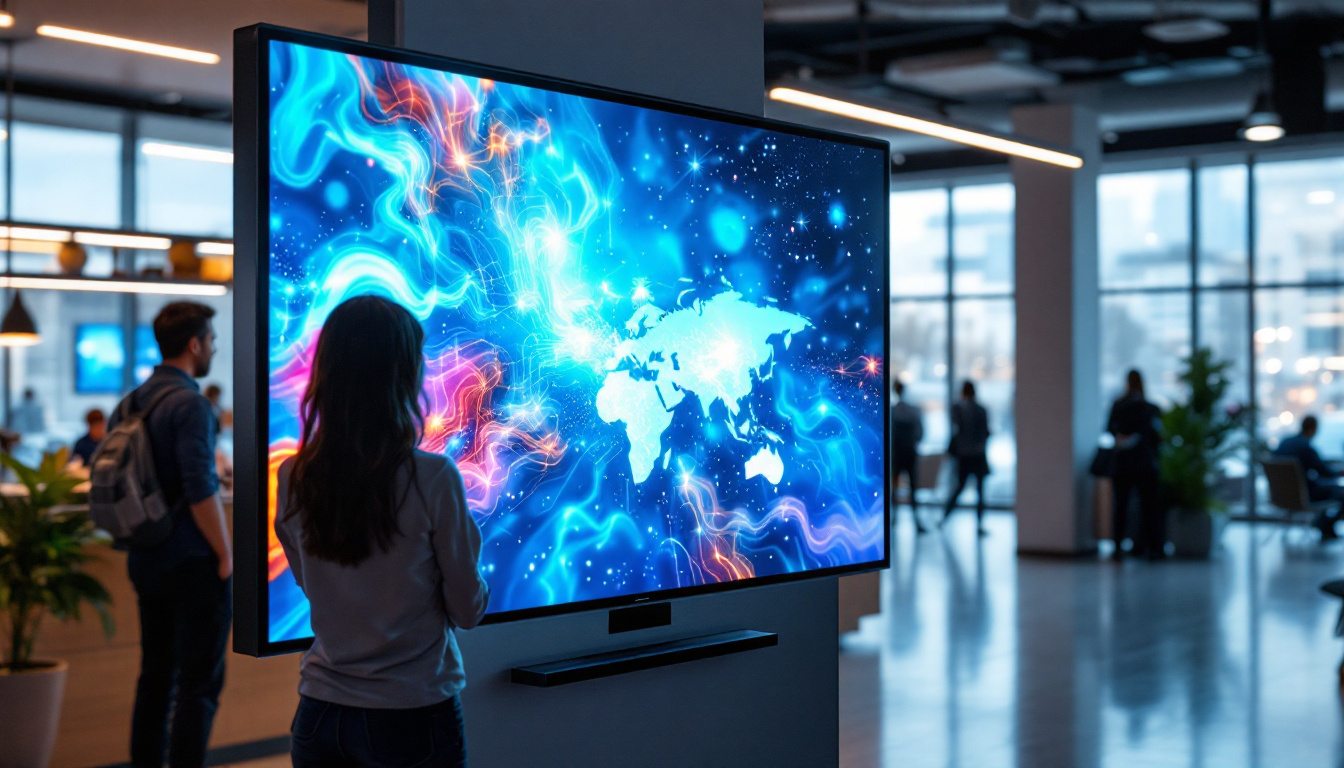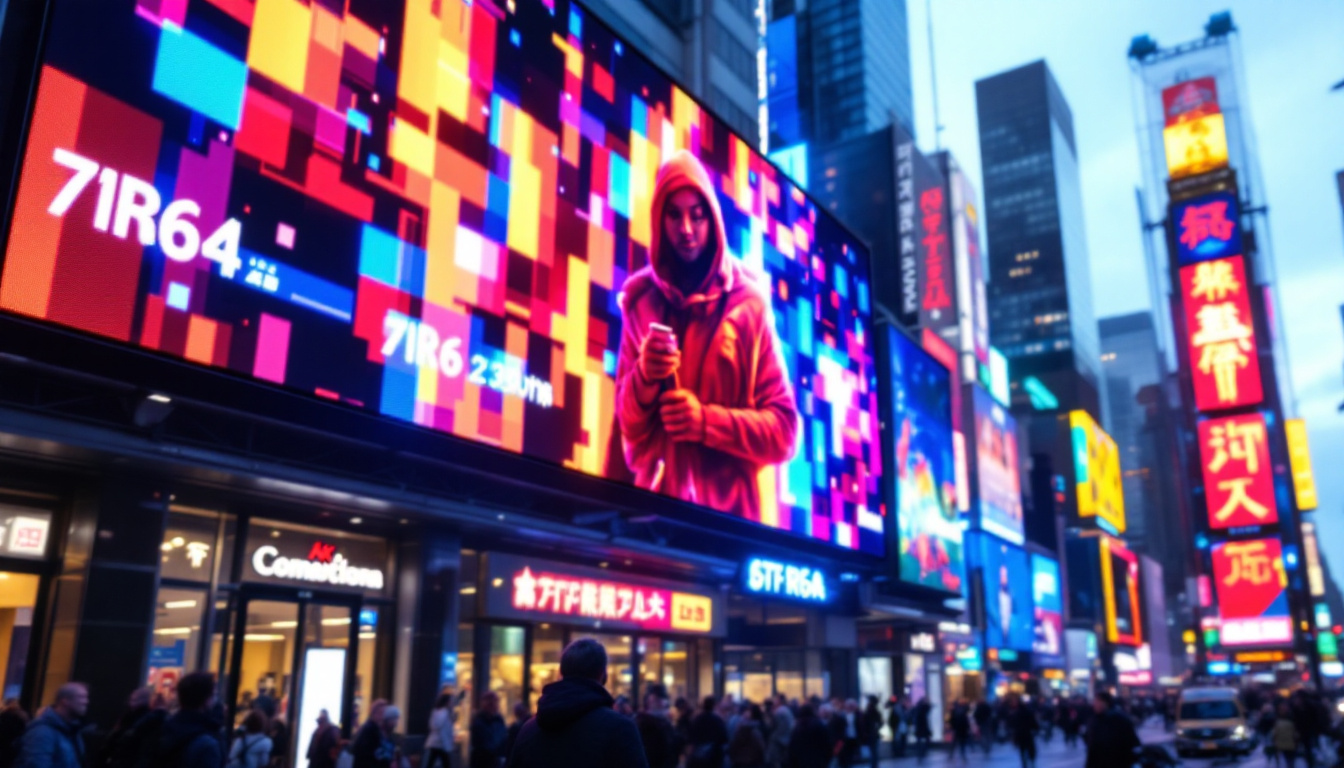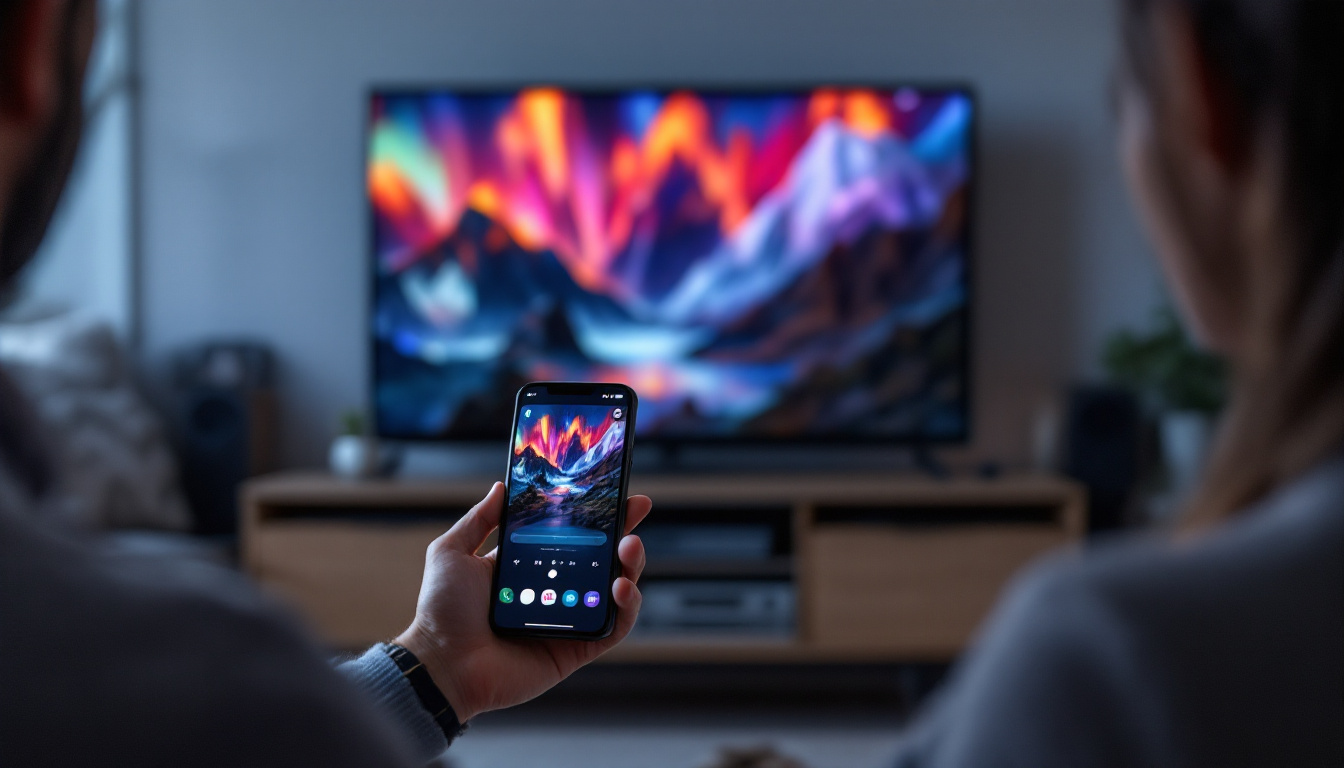In today’s digital landscape, video walls have emerged as a powerful tool for communication, advertising, and entertainment. With the ability to create immersive experiences, LED displays are at the forefront of this technology. This article delves into the intricacies of video wall setups, focusing on LED displays, their components, advantages, and practical applications.
Understanding Video Walls
A video wall is a large display system made up of multiple screens or panels that work together to present a single cohesive image or video. The technology has evolved significantly, and LED displays have become the preferred choice for many installations due to their brightness, color accuracy, and flexibility. Video walls are commonly used in various environments, including control rooms, retail spaces, and event venues, where impactful visual communication is essential.
What is an LED Display?
LED, or Light Emitting Diode, displays utilize tiny diodes to produce light and color. Unlike traditional LCD screens, which rely on backlighting, LED displays emit light directly, resulting in vibrant colors and deeper blacks. This technology allows for thinner and lighter panels, making them ideal for video wall setups. Furthermore, the advancements in LED technology have led to the development of different types of displays, such as OLED and MicroLED, which offer even greater contrast ratios and viewing angles, enhancing the overall visual experience.
Components of a Video Wall
Setting up a video wall involves several key components:
- LED Panels: The core of any video wall, these panels come in various sizes and resolutions, allowing for customization based on the specific needs of the installation. High-resolution panels are particularly important for applications that require detailed imagery, such as digital signage or artistic displays.
- Video Processing Unit: This device manages the input signals and ensures the content is displayed seamlessly across all panels. It plays a crucial role in scaling and distributing the video feed. Advanced processing units can also support multiple input sources, enabling dynamic content switching and real-time updates.
- Mounting Hardware: Proper mounting is essential for stability and alignment. This includes brackets, frames, and structures designed to support the weight and configuration of the panels. The design of the mounting system can also influence the viewing angle and overall aesthetics of the installation.
- Cabling and Connectivity: High-quality cables are necessary to connect the panels to the video processor and power sources. This includes HDMI, DisplayPort, and network cables. Additionally, the choice of cabling can impact the performance and reliability of the video wall, especially in large-scale setups where signal integrity is crucial.
Moreover, video walls often incorporate sophisticated software solutions that allow for content management and scheduling. This software can facilitate the integration of various media types, including live feeds, videos, images, and interactive content, providing a versatile platform for communication and engagement. As a result, video walls can serve not only as a visual display but also as an interactive experience, drawing in viewers and enhancing their connection to the displayed content.
Advantages of LED Video Walls
LED video walls offer numerous advantages that make them a popular choice for various applications. From retail environments to corporate settings, the benefits are compelling.
High Brightness and Contrast
One of the standout features of LED displays is their brightness. They can produce vibrant images even in well-lit environments, making them suitable for outdoor and indoor use. The high contrast ratios ensure that colors pop, enhancing the overall viewing experience.
Seamless Integration
Modern LED panels are designed to minimize bezels, the borders between screens, which can disrupt the visual flow. This seamless integration allows for a more immersive experience, making it difficult for viewers to discern where one screen ends and another begins.
Energy Efficiency
LED technology is known for its energy efficiency compared to traditional display technologies. This not only reduces operational costs but also makes LED video walls a more sustainable choice, aligning with the growing emphasis on eco-friendly solutions.
Applications of LED Video Walls
The versatility of LED video walls enables their use in a wide array of settings. Here are some prominent applications:
Retail and Advertising
In the retail sector, LED video walls serve as eye-catching displays that attract customers’ attention. They can showcase promotional content, product videos, or even interactive displays that engage shoppers. The dynamic nature of video walls allows retailers to update content easily, ensuring that their messaging remains fresh and relevant.
Corporate and Event Spaces
For corporate environments, video walls are often used for presentations, conferences, and events. They can display data visualizations, video feeds, or live social media updates, enhancing audience engagement. Additionally, video walls can be utilized in control rooms for monitoring and surveillance, providing real-time information to operators.
Entertainment Venues
In the entertainment industry, LED video walls have transformed the way audiences experience events. Concerts, sports arenas, and theaters utilize these displays to create stunning visual effects that complement live performances. The ability to synchronize content across multiple panels enhances the overall atmosphere, making events more memorable.
Design Considerations for Video Wall Setup
When planning a video wall installation, several design considerations must be taken into account to ensure optimal performance and viewer experience.
Resolution and Size
The resolution of the LED panels is crucial for delivering high-quality visuals. Higher resolutions are essential for larger video walls, especially when viewed from a close distance. Additionally, the size of the video wall should be determined based on the viewing distance and the intended use.
Viewing Angles
Different LED panels have varying viewing angles, which can affect how the content is perceived from different positions in the room. It is essential to select panels with wide viewing angles to ensure that everyone in the audience has a clear view of the content, regardless of their location.
Content Management
Effective content management is vital for maximizing the impact of a video wall. This involves not only the creation of engaging visuals but also the scheduling and updating of content. A robust content management system (CMS) can streamline this process, allowing for easy updates and real-time adjustments.
Installation Process
Installing an LED video wall requires careful planning and execution. The following steps outline the typical installation process:
Site Assessment
Before installation begins, a thorough site assessment is conducted to evaluate the space where the video wall will be placed. Factors such as lighting conditions, wall structure, and electrical access are considered to determine the best configuration.
Mounting and Calibration
Once the site is prepared, the mounting hardware is installed. This step is critical to ensure that the panels are securely held in place and properly aligned. After mounting, calibration of the panels is performed to ensure uniform brightness and color across the entire video wall.
Testing and Final Adjustments
After installation, extensive testing is conducted to verify that all components are functioning correctly. Any necessary adjustments are made to optimize performance. This includes fine-tuning the video processor settings and ensuring that the content is displayed as intended.
Maintenance of LED Video Walls
Regular maintenance is essential to keep LED video walls operating at peak performance. This not only extends the lifespan of the panels but also ensures that the content remains vibrant and engaging.
Cleaning and Care
Dust and grime can accumulate on LED panels, affecting image quality. Regular cleaning is necessary to maintain clarity and brightness. It is advisable to use appropriate cleaning solutions and soft cloths to avoid damaging the screens.
Software Updates
Keeping the video processing software up to date is crucial for optimal performance. Software updates often include new features, security patches, and improvements that enhance functionality. Regularly checking for updates ensures that the system operates smoothly.
Monitoring Performance
Monitoring the performance of the video wall is essential for identifying potential issues before they become significant problems. This can involve using diagnostic tools to check for pixel failures, temperature fluctuations, and other performance metrics.
Future Trends in Video Wall Technology
The video wall industry is continuously evolving, with new technologies and trends emerging that promise to enhance the capabilities of LED displays.
Advancements in Resolution
As technology progresses, higher resolution displays are becoming more accessible. 8K resolution is on the horizon, offering unparalleled detail and clarity. This advancement will allow for even more immersive experiences, particularly in applications where fine detail is essential.
Integration with AI and Automation
Artificial intelligence (AI) is beginning to play a role in content management for video walls. AI-driven systems can analyze viewer engagement and adapt content in real-time, ensuring that the most relevant information is presented to the audience. This level of automation can significantly enhance the effectiveness of video wall installations.
Flexible and Modular Designs
Future video wall setups may feature more flexible and modular designs, allowing for dynamic configurations that can be easily adjusted based on specific needs. This adaptability will enable businesses to create customized experiences that can change with their requirements.
Conclusion
LED video walls represent a significant advancement in display technology, offering vibrant visuals and versatile applications across various industries. Understanding the components, advantages, and design considerations is crucial for anyone looking to implement a video wall setup. As technology continues to evolve, staying informed about the latest trends will ensure that installations remain cutting-edge and effective.
Whether for retail, corporate, or entertainment purposes, the impact of a well-designed LED video wall can be profound, transforming spaces and enhancing viewer engagement. With careful planning and execution, the potential of video walls is limitless, paving the way for innovative communication and captivating experiences.
Discover LumenMatrix’s Innovative LED Solutions
Ready to elevate your space with the latest in LED display technology? Look no further than LumenMatrix, a pioneer in crafting visually stunning and technologically advanced LED solutions. From vibrant Indoor and Outdoor LED Wall Displays to dynamic Vehicle and Sports LED Displays, and even customizable options like Floor and Transparent LED Displays, LumenMatrix is committed to revolutionizing the way you communicate visually. Experience the future of digital signage and create unforgettable experiences with our comprehensive range of LED displays. Check out LumenMatrix LED Display Solutions today and transform your message into an impactful visual journey.

